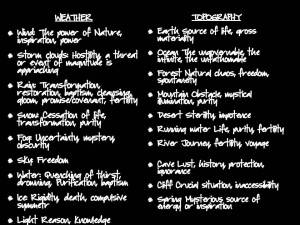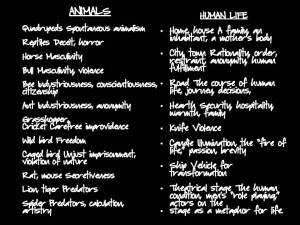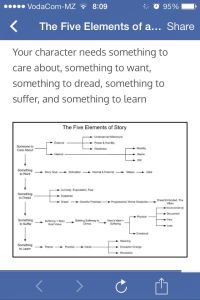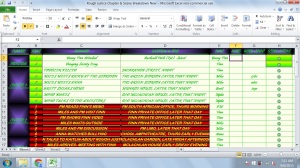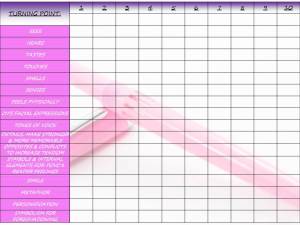CARTOMANCY
Cartomancy is basically Tarot Card reading, but with a pack of normal, every day playing cards. I came across this idea accidentally while doing research for one of my own writing projects, Voodoo Carnival. Not only did it add another element of depth, and simplicity, which was surprising, but I was provided with a great deal of inspiration for the plot, and for creating the characters themselves. It’s so easy, and the readings can be interpreted to suit your novel to a point of course which is marvelous.
HOW TO READ THE CARDS TO ENRICH YOUR WRITING
There are so many different spreads out there, to cater for the various questions in an actual reading. But I find they can be easily adapted to suit whatever element of your writing you’d like to enrich.
Before you start, I’ve compiled a PDF file to outline the meanings of each card in the deck. Please excuse any repetitions, I’m so excited about this I just wanted to share so others could start benefiting too! An edited version is on the way.
card meanings for writers
1 CARD READING- ANSWER A QUESTION:
Are you wondering what next? Or where a character should go? Or what choice they should make? Or even what obstacle to add to the mix that raises the stakes? If you want a quick answer to a question, the one card reading is the way to go. Just shuffle the cards and focus on your question, pull one card and interpret using my guide to meanings below. Simple. If the card you draw doesn’t fit. Just draw another one.
THE THREE CARD SPREAD- AN OVERVIEW OF A CHARACTER, A MINI PLOT, OR A SPECIFIC SITUATION.
This spread can even be used to add depth to your setting if interpreted as such. Again, shuffle the cards while focusing on your question, lay out your three cards from left to right.
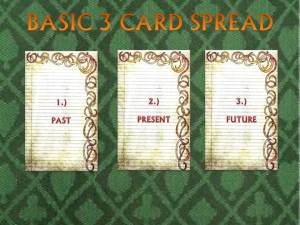 CARD 1: The Past,
CARD 1: The Past,
This can be in reference to
- a character’s past (The back Story)
- The past leading up to a specific moment in your story
- The exposition of your plot
- The history of your setting
CARD 2: The present
This can refer to
- A character’s current situation- their state at the beginning of your piece
- A specific event or element of your piece
- Elements in the stage of your plot you’re focusing on that you may not have considered
- Elements of your setting you may not have considered, and which have an impact on your plot or characters
- The Current mood and atmosphere of your setting
CARD 3: The future
This can refer to:
- The character’s future- what is going to happen to them either during your piece or after the resolution
- The outcome of a specific event in your plot
- The outcome of your plot- the resolution
- What is going to happen to your setting or in your setting
CARD READINGS FOR ENRICHING CHARACTERS
THE GMC SPREAD
This is a six card spread that outlines your character’s internal and external goals, motivations and conflicts. Shuffle the cards and lay out two rows of three, from left to right.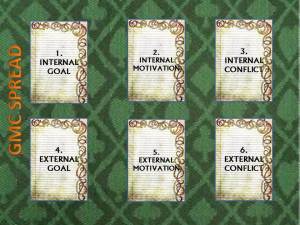
Card 1: Internal Goal
- What does your character need, unconsciously, emotionally?
- What lessons do they need to learn?
- What fears do they have to face?
Card 2: Internal Motivation
- Why is it important your character achieve their internal goals?
- What do they need at the core?
- What is most important to them?
Card 3: Internal Conflict
- What emotions, thoughts, fears and moral dilemmas prevent your character from achieving their internal goals?
- What preconceptions may be limiting them?
- Are they mistaken about themselves, their capabilities?
- Do they lack confidence?
Card 4: External Goal
What does your character want, consciously and tangibly?
Card 5: External Motivation
- Why do they want it?
- What drives them to achieve it?
- Why can’t they fail?
- What do they need most?
- What do they love/ desire more than anything?
Card 6: External Conflict
- What is preventing your character from achieving their tangible goal?
- Other characters?
- Society?
- Nature?
- Machine?
- Something supernatural?
THE MAGIC SQUARE SPREAD
Before starting, select a card representing your character using the guide. If you need to create a character, shuffle the relevant cards and choose one at random.
- Place the chosen card to the side and shuffle the remainder of the deck, focusing on the character in question.
- Take four cards from the top of the deck and lay them out, from left to right, 1, 2, 3 in the first row and the fourth card on the second.
- Insert the card you put aside, card 5
- Pull four more cards from the top of the pack and lay them out from left to right. Your spread should look the same as the nine card spread when completed.
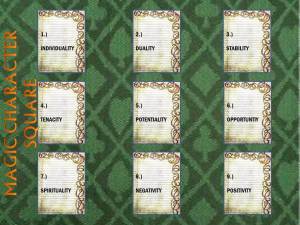 CARD 1- INDIVIDUALITY: The true nature of your character
CARD 1- INDIVIDUALITY: The true nature of your character
CARD 2- DUALITY: Your Character’s relationships with others
CARD 3- STABILITY: What is stable in your character’s life
CARD 4- TENACITY: What beliefs and behaviors are most important to your character, the things they wont compromise on.
CARD 5- POTENTIALITY: Who your Character is, or in some cases, who he or she could, or wants to be at the conclusion of your piece
CARD 6- OPPORTUNITY: What opportunities does this character’s personality present.
CARD 7- SPIRITUALITY: Your character’s religious/ spiritual beliefs, or the degree of religious/ spiritual influence on their lives
CARD 8- NEGATIVITY: The character’s weaknesses
CARD 9- POSITIVITY: The character’s strengths
THE CHARACTER ARC
This spread outlines your character’s development throughout your piece. It is laid out from back to front as I find it easier to outline character arcs from the end back, but please feel free to change the order if you wish.
 Shuffle the cards and lay the out as per the illustration, from right to left this time.
Shuffle the cards and lay the out as per the illustration, from right to left this time.
Card 1: Final State
- What does your character know at the end that they didn’t know at the beginning?
- How have they changed?
- How have their circumstances improved?
- What changes have they made?
Card 2: Moment of truth
- The point where your character has to decide whether to change, and be happy, or not change and be miserable.
- What and who pushes them to this point?
- Make it as tense and difficult as possible.
Cards 3, 4 and 5: escalation or Build
What series of events bring your character to solving their knot?
Card 6: The knot
- Where is your character unfulfilled
- What lessons do they need to learn?
- What fears must they face?
Card 7: Initial State
Your character’s state of stasis and stagnation at the beginning.
CARD READINGS FOR ENRICHING PLOT
THREE CARDS FOR START OF SCENE
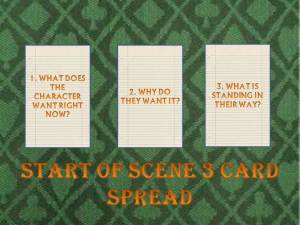 This spread is just a simple way to focus your scene before you start writing. Shuffle your cards and lay three out from left to right and use them to answer the following questions:
This spread is just a simple way to focus your scene before you start writing. Shuffle your cards and lay three out from left to right and use them to answer the following questions:
- What does your character want right now?
- Why do they want it?
- What is standing in their way?
THE HORSESHOE OF FATE
This is a seven card spread, and can be used for specific elements of your plot, your major plot points, or an overview of your plot in it’s entirety. Shuffle and spread the cards in a fan shape as indicated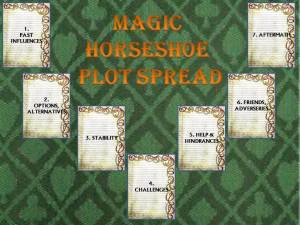
CARD 1: PAST INFLUENCES AFFECTING THE CURRENT PROBLEMS AND SITUATION
This can refer to the back story of the characters involved, what has happened in your piece up to this point, or what happened in or to your current setting.
CARD 2: OPTIONS & ALTERNATIVES
The choices available to your character to deal with or resolve the specific problem they face.
CARD 3: STABILITY OF THE SITUATION
I use this card firstly, to assess what is not going to change in the situation, and secondly, to look at external influences (other characters, setting, obstacles) which may impact the outcome of the situation, or make it more unstable.
CARD 4: CHALLENGES
What internal and external elements impede the character from concluding this situation in such a way they achieve their goal.
CARD 5: HELP OR HINDRANCES
Elements in the situation which help or hinder your main character to achieve their goal. These could be:
- Internal- your character’s faults and weaknesses
- Other characters in the scene, or who could be included
- Elements in the setting
- Obstacles or complications in the setting, or the other characters
CARD 6: FRIENDS OR ADVERSARIES
- Who they are
- Does your character get betrayed, lied to, stolen from
- If you know who they are, what else could they do to compound/ resolve the problem?
CARD 7: AFTERMATH
- What is the state of affairs at the conclusion of the event?
- What is the conclusion of the event itself?
- What transpires as a result of the event’s conclusion? What happens next?
THE BASIC PLOT OUTLINE
Shuffle cards and lay out six at a diagonal, upward from left to right, as per the picture, the seventh card is placed beneath card 6. Then, at the bottom, lay out four more cards in a straight line from left to right.
Card 1: Basic Situation
Your character in the normal world, before anything happens.
Card 2: Inciting Incident
What happens that makes everything different?
Your character may not know, but their world has changed
This incident is what sends your protagonist off in pursuit of their goal
Card 3: Conflict
Who and what prevents your character from reaching their goal? Consider the following:
- Conflict vs self
- Conflict vs others
- Conflict vs society
- Conflict vs nature
- Conflict vs machine
- Conflict vs the supernatural
Card 4: Obstacles
What stands in your characters way? Or who?
Card 5: Problems/ Complications
- Who complicates matters for your protagonist?
- What elements of their personality cause problems?
- What events increase the tension, make them doubt themselves, force them to change plans?
Card 6: Climax
The protagonist is in the final face off, the moment of truth, they now face the antagonist and themselves in a last stand
Resolution:
- The new status quo
- What has been accomplished
- What has been learned
- How have things changed
Card 8: main Characters
Your protagonist and antagonist
Card 9: other characters
Card 10: setting
- Where does your piece take place?
- What important objects are in the setting?
Card 11: Mood
What is the mood and atmosphere throughout?
THE TRY/ FAIL SPREAD
Lay one card in the middle, that is the centre of your circle. Then encircle that card with a further ten cards as per the illustration.
Card 1: Goal
What is your character;s goal for this mini plot?
Card 2: plan
How do they plan to achieve it?
Card 3: what stands in the way
Card 4: is there a temporary success?
Card 5: what goes wrong?
Card 6: what trait/ weakness causes your character to fail?
Card 7: How does the character learn to overcome this flaw?
Card 8: How do they react to failure?
Card 9: How does their failure raise the stakes?
Card 10: What motivates your character to try again?
Card 11: What is your character’s new goal?
SCENE AND SEQUEL SPREAD
This spread simply mirrors the basic structure of scenes, and in many ways resembles the try/ fail circle above. Shuffle and lay out six cards from left to right in two rows of three. The top row is your scene, and underneath, the sequel.
- Goal: what the POVC wants at the beginning of the scene
- Conflict: obstacles preventing them from attaining it
- Disaster: failure to achieve goal
- Reaction to the disaster
- Dilemma: a situation with no good choices
- Conclusion: decision
I hope this fabulous and novel approach brings you as much fun as it did me. As always, I appreciate your feedback. There’s more on the way.
KEEP WRITING MADLY

